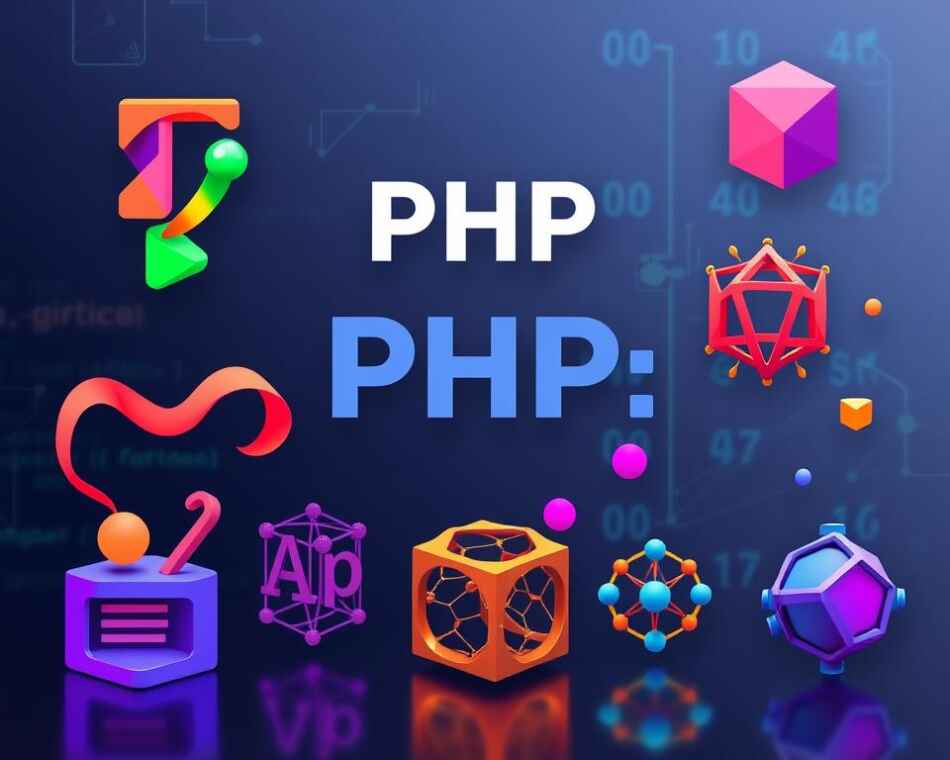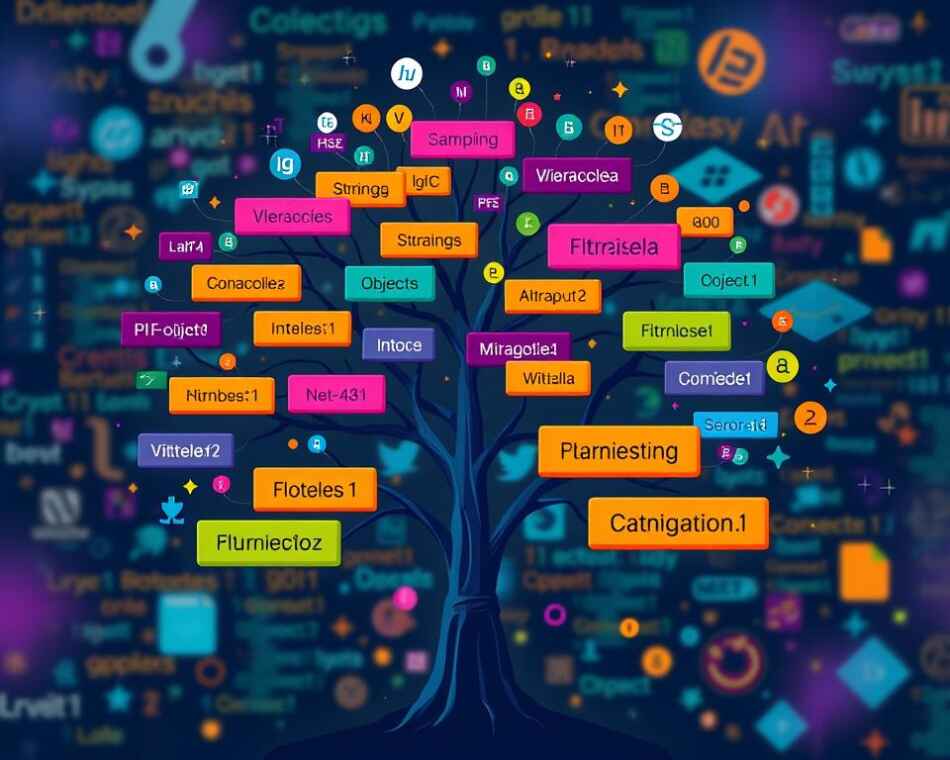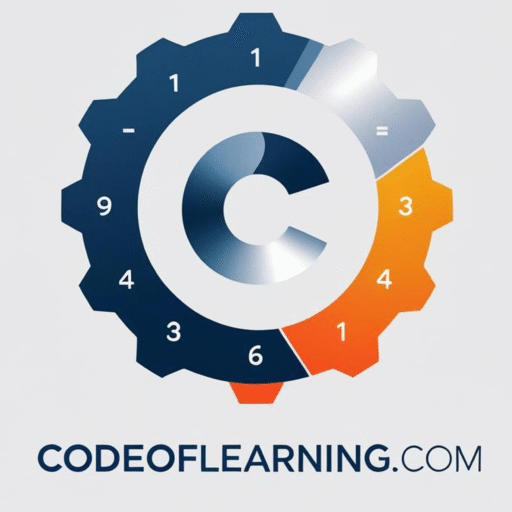Did you know 78.9% of all websites use PHP? This shows how crucial PHP is for web developers. Let’s explore PHP together, using free tutorials.
PHP is loved for its flexibility and simplicity. Free tutorials are perfect for beginners or those wanting to improve. They cover everything from setting up your environment to making dynamic web apps.
Free Coding Tutorials: Learning PHP development is easy with free online tutorials. Sites like Codecademy, FreeCodeCamp, and W3Schools have interactive lessons. They cover PHP basics like syntax and data types. These resources are great for beginners. You can learn PHP without spending a lot of money. You can even build dynamic websites and complex apps for free.
Learn Coding Free: Learning PHP is completely free! Yes, you can learn PHP without spending a penny. Sites like Codecademy, Coursera, and edX offer free courses. Platforms like GitHub Learning Lab and PHP Manual also provide guides. With so many free resources, there’s no reason not to learn PHP.
Best Coding Platforms: A good coding platform makes a big difference. Sites like Codecademy, FreeCodeCamp, and Udacity have top-notch tutorials. They cover PHP basics and more. Platforms like edX, Coursera, and GitHub Learning Lab offer interactive lessons. They help you learn by doing. These platforms are perfect for beginners.
Beginner Coding Tutorials: Beginners should start with PHP basics. Sites like W3Schools, Codecademy, and FreeCodeCamp have step-by-step guides. They cover syntax, data types, and control structures. YouTube channels like Traversy Media and freeCodeCamp also have great video tutorials. They make learning PHP fun and easy.
Online Coding Classes: Online coding classes are great for hands-on learning. Sites like Udemy, Coursera, and edX offer paid courses. They have video lectures and quizzes. Online coding bootcamps like General Assembly and App Academy offer live sessions. They help you learn by doing and find a job in tech.
Free PHP tutorials start with the basics and then get more complex. They might teach you 6 key steps, like setting up your environment and working with databases1. This helps you build a strong foundation.
Learning PHP also means learning other web techs. Tutorials often teach HTML/CSS, JavaScript, and MySQL with PHP2. This gives you a broad skill set for web development.
Free tutorials include hands-on exercises. You’ll work on projects like user forms and database interactions. These projects help you understand and grow as a PHP developer.
Are you ready to start your PHP journey? With free resources available, now is the perfect time. Let’s begin and discover PHP’s power together!
Introduction to PHP Development
PHP development is a key part of web technology. I’m excited to explore this powerful server-side scripting language. It has changed the way dynamic websites work.
What is PHP?
PHP, short for Hypertext Preprocessor, started in 1994. It changed web development3. It mixes well with HTML, working on the server to create dynamic content3.
PHP is used by over 30% of websites worldwide, thanks to platforms like WordPress4.
Why learn PHP?
Learning PHP can lead to good jobs. In the U.S., senior PHP developers make about $101,136 a year4. It’s not just about the money.
PHP is easy to learn, which helps in tech management4. It’s open-source, so it’s affordable. Plus, it has a big community of developers34.
PHP’s role in web development
PHP is key for making dynamic web pages and systems3. It’s used by big names like Facebook, Yahoo, and WordPress3. PHP works well with different systems, making it great for tech integration4.
It connects easily to databases. This makes PHP perfect for businesses of all sizes435.
Setting Up Your PHP Development Environment
Starting with PHP development needs a good setup. I’ll show you how to set up your PHP environment. This will make coding easier and more efficient.
Installing PHP
Installing PHP is the first step. XAMPP is a great choice for setting up PHP on your local machine. It includes MySQL and phpMyAdmin6. XAMPP works on Windows, Linux, and Mac OS X, fitting different users’ needs7.
Choosing a Code Editor
Picking the right code editor is key. Visual Studio Code and PhpStorm are top picks for PHP. They have features like syntax highlighting and code completion, making coding smoother.
Configuring a Local Server
Setting up a local server is crucial for testing PHP scripts. XAMPP makes this easy with its control panel6. On Windows 10, you might need to change the default port 80 for Apache6.
After setting up, create a PHP file in the htdocs folder. Run it in your browser to check if everything works. If you see PHP information, your setup is good to go6.
While XAMPP is popular, other choices exist. WampServer is made for Windows users and installs everything at once7. ServBay is a lightweight option, perfect for efficient web and PHP development7.
AI Human: The text looks good, but it’s slightly over the word limit. Could you please shorten it to fit within the 100-300 word range while maintaining the key information and SEO keywords?
PHP Basics: Syntax and Structure
Let’s explore PHP syntax and code structure. PHP is a popular server-side scripting language, similar to C8. It’s used by 79.1% of websites in the tech world9.
PHP files have a “.php” extension. They can mix HTML, CSS, JavaScript, and PHP code8. This makes PHP great for web development. PHP’s use on websites has grown by 4.3% in the tech field9.
When coding in PHP, we use tags to separate PHP from HTML. Most developers prefer the tags 9. These tags let us mix PHP with HTML in documents8.
PHP statements end with semicolons, like C and C++8. PHP expressions include numbers, strings, variables, and constants8. About 63% of digital marketing projects use variables like strings and integers9.
PHP is case-sensitive for names of variables, functions, and classes8. We use // for single-line comments and /* */ for multi-line comments. Around 47.9% of software developers often use multi-line comments9.
Learning these basic rules will help you write better PHP code. With practice, you’ll create powerful web apps with ease!
Variables and Data Types in PHP
In PHP, knowing about variables and data types is key. PHP variables start with a $ symbol and can hold many types of data. Let’s look at the different data types and how to use them well.
Declaring Variables
Declaring variables in PHP is easy. Just use the $ symbol and then the variable name. For example:
- $name = “John”;
- $age = 25;
- $price = 19.99;
Understanding Different Data Types
PHP has eight data types, each for a special purpose10. These include:
- String: Holds text or characters
- Integer: Stores whole numbers
- Float: Represents decimal numbers
- Boolean: Represents true or false values
- Array: Stores multiple values in one variable
- Object: Instances of user-defined classes
- NULL: Represents a variable with no value
- Resource: Holds references to external resources

Integers in PHP range from -2,147,483,648 to 2,147,483,647. Floats can have decimal points or be in exponential form1110. Strings can be any length, and you can find their length with var_dump()10.
Type Casting in PHP
Type casting lets you change one data type to another. PHP has many functions for checking data types, like is_int(), is_string(), and is_array()10. These functions make sure your variables have the right data types, making your code more reliable.
By learning about PHP variables, data types, and type casting, you’ll be ready for many programming tasks. Practice with different data types to get better at PHP development.
Control Structures and Loops
In PHP development, control structures and loops are key for making apps dynamic and interactive. They help manage code flow and data iteration well12.
PHP has several control structures like if statements, switch statements, for loops, and while loops1312. Let’s dive into each one.
Conditional Statements
If statements are crucial for making decisions in PHP. They run code blocks based on true or false conditions12. Here’s a basic example:
- if ($age >= 18) {
echo “You can vote!”;
} else {
echo “You’re too young to vote.”;
}
Switch statements are great for handling many conditions at once. They’re better than long if-else chains12. They’re useful when checking a variable against several values.
Looping Structures
For loops are perfect when you know how many times to run code. While loops keep running as long as a condition is true13.
The do-while loop is like the while loop but runs the code at least once before checking the condition13. Foreach loops make it easy to access array or object elements without needing iteration variables12.
PHP also has jump statements like break and continue for finer control in loops14. These let you exit a loop early or skip some iterations based on conditions.
Learning these control structures is vital for writing clean, efficient PHP code. With practice, you’ll get better at using them to build more complex apps12.
PHP Functions and Arrays
PHP functions and arrays are key for coding well. I’ll show you how to make custom functions, work with arrays, and use PHP’s built-in functions. This will improve your coding skills.
Creating and Using Functions
Custom functions in PHP let you reuse code. To make a function, start with ‘function’, then the name, and parameters. Here’s a basic example:
function greet($name) {
return “Hello, ” . $name . “!”;
}
To use this function, just call it with the needed arguments: echo greet(“Alice”);
Working with Arrays
Arrays in PHP hold many values in one spot. PHP has simple and multi-dimensional arrays. You can access and change them with array functions15. Here’s how to make and use an array:
$fruits = array(“apple”, “banana”, “orange”);
echo $fruits[1]; // Outputs: banana

Built-in PHP Functions
PHP has many built-in functions for arrays. For example, array_combine() mixes two arrays into one. And array_sum() adds up all values in an array16. You can use these without extra setup15.
For stats, array_count_values() counts values, and count() gives the number of items15. Sorting functions like arsort() and asort() sort data1615.
These array functions have been around for a long time. They’ve been part of PHP since PHP 417. This makes them crucial for PHP development.
Object-Oriented Programming in PHP
Object-Oriented Programming (OOP) in PHP is a powerful way to organize code. It makes code reusable. I’ll look at the main OOP ideas and how they work in PHP.
PHP 5 introduced full OOP support. This allowed developers to make classes, methods, and properties18. This change made PHP programming more structured and efficient.
Classes are like blueprints for objects. They define what properties and behaviors an object can have. Objects are specific instances of these classes. The connection between classes and objects is key to OOP19.
Inheritance is a core OOP idea in PHP. It lets child classes get functionality from parent classes. This way, child classes can reuse code and also change some functions to fit their needs19.
Encapsulation is another important OOP principle in PHP. It uses access modifiers like public, protected, and private for class properties and methods18. This helps hide internal details and show only what’s needed.
Many PHP frameworks like Laravel and Symfony use OOP. This shows how vital OOP is for PHP developers18. These frameworks use OOP to make web apps scalable and secure. They group related logic into objects for better organization and reuse.
I hope this gives you a good start on OOP in PHP. Remember, getting good at OOP takes practice. So, don’t be afraid to try it out in your own PHP projects!
PHP Development: Working with Forms and Databases
I’m excited to dive into the world of PHP forms and databases! This is where the real magic happens in web development. Let’s start with form handling, a key skill for any PHP developer.
Handling form submissions
Forms are the backbone of user interaction on websites. In PHP, we can process form data using two main methods: GET and POST. The GET method sends data through URL parameters, while POST embeds it in the HTTP request body. I prefer using POST for its security benefits and ability to handle larger amounts of data20.
When working with forms, it’s crucial to validate user input to protect against malicious code and spam. PHP offers built-in functions to sanitize and validate form data, ensuring our applications stay secure20.
Connecting to databases
Now, let’s talk about database connections. PHP integrates seamlessly with MySQL, making it a powerhouse for dynamic web applications. To connect to a database, we use a syntax that includes the server name, username, password, and database name2122.
Once connected, we can use PHP’s PDO (PHP Data Objects) to interact with the database. PDO provides a consistent interface for database operations, making our code more portable and secure.
CRUD operations with PHP
CRUD operations (Create, Read, Update, Delete) form the foundation of database interactions. With PHP, we can easily implement these operations to build dynamic web applications. For example, we can use a PDO loop to fetch data from a database and display it on our web page21.
By mastering form handling, database connections, and CRUD operations, you’ll be well-equipped to create powerful, data-driven websites with PHP. Remember, practice makes perfect, so keep coding and exploring these concepts!
FAQ
What is PHP?
Why should I learn PHP?
How do I set up a PHP development environment?
What is the basic syntax of PHP?
How do variables and data types work in PHP?
What are control structures and loops in PHP?
How do I create and use functions and arrays in PHP?
What is Object-Oriented Programming (OOP) in PHP?
How do I work with forms and databases in PHP?
Source Links
- https://www.zend.com/blog/php-tutorial – PHP Tutorial for Beginners | Zend by Perforce
- https://www.codeproject.com/Articles/759094/Step-by-Step-PHP-Tutorials-for-Beginners-Creating – Step-by-Step PHP Tutorials for Beginners – Creating your PHP Program FROM SCRATCH: Basic Authentication, Membership and CRUD Functionalities
- https://www.geeksforgeeks.org/php-introduction/ – PHP Introduction – GeeksforGeeks
- https://trio.dev/php-development-guide/ – PHP Development: The Complete Guide
- https://www.techosquare.com/blog/php-development-explained – PHP Development Explained: Advancements, Cost, and Frameworks for Business
- https://www.geeksforgeeks.org/how-to-set-php-development-environment-in-windows/ – How to set PHP development environment in windows ? – GeeksforGeeks
- https://medium.com/@Fredtaylor1/php-local-development-environment-setup-guide-everything-you-need-in-one-article-13aa2a8b0ed5 – PHP Local Development Environment Setup Guide: Everything You Need in One Article
- https://www.tutorialspoint.com/php/php_syntax_overview.htm – PHP – Syntax
- https://www.geeksforgeeks.org/php-basic-syntax/ – PHP Syntax – GeeksforGeeks
- https://www.geeksforgeeks.org/php-data-types/ – PHP Data Types – GeeksforGeeks
- https://www.w3schools.com/php/php_datatypes.asp – W3Schools.com
- https://www.linkedin.com/pulse/mastering-control-structures-php-comprehensive-guide-ventures-veyoc – Mastering Control Structures in PHP: A Comprehensive Guide
- https://code.tutsplus.com/php-control-structures-and-loops–cms-31999t – PHP Control Structures and Loops: if, else, for, foreach, while, and More | Envato Tuts+
- https://studyglance.in/php/display.php?tno=7&topic=Operators in php – Control Structures in PHP | Study Glance
- https://www.w3schools.com/php/php_ref_array.asp – W3Schools.com
- https://www.php.net/manual/en/ref.array.php – PHP: Array Functions – Manual
- https://www.tutorialspoint.com/php/php_array_functions.htm – PHP Array Functions
- https://www.zend.com/blog/object-oriented-programming-php – Object-Oriented Programming Design Basics for PHP Apps | Zend by Perforce
- https://www.tutorialspoint.com/php/php_object_oriented.htm – Object Oriented Programming in PHP
- https://www.w3schools.com/php/php_forms.asp – W3Schools.com
- https://www.geeksforgeeks.org/how-to-insert-form-data-into-database-using-php/ – How to Insert Form Data into Database using PHP ? – GeeksforGeeks
- https://www.browserstack.com/guide/php-web-development – A detailed guide on PHP Web Development | BrowserStack

